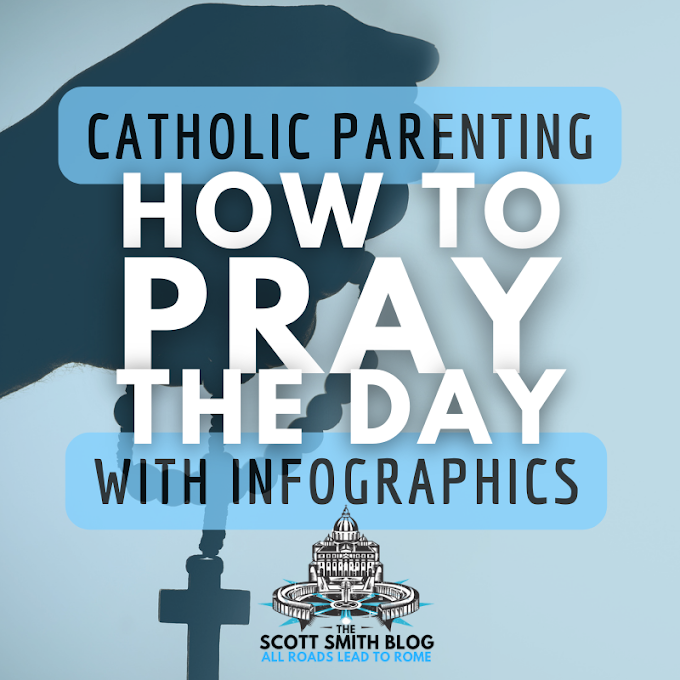In this post you will learn
Do you know about Blessed Anne Catherine Emmerich?
Incredibly, God gave this nun the special privilege of beholding innumerable Biblical events from Creation to Christ’s Passion and beyond. You may have already seen many of her visions, as depicted in Mel Gibson's 2004 film The Passion of the Christ.
Blessed Anne Catherine Emmerich's visions of Christ's Passion, Death, and Resurrection brought these events to life, cinematically, like never before.
So, I had an idea ...
What if Emmerich's visions could do the same for the Rosary?
Pray the Rosary like never before!
I just published this new book. There is a section for every mystery of the Rosary - Emmerich had a vision for every one.
Enter into the mysteries of the Rosary through the eyes of this 19th-century Catholic mystic: Blessed Anne Catherine Emmerich.

Never before have Emmerich’s revelations been collected in a single volume to help you pray the Rosary. Emmerich was able to describe the events of the Rosary in intimate, exquisite detail.
Adding depth and texture to the Gospel accounts, these passages will greatly enhance your experience of the meditations of the Rosary. Enjoy!
So, who was Blessed Anne Catherine Emmerich?
Who was Blessed Anne Catherine Emmerich?
Anne Catherine Emmerich or Anna Katharina Emmerick was born on September 8, 1774 and died on February 9, 1824. Emmerich was an Augustinian nun, or more specifically, an Augustinian Canoness Regular of Windesheim. Emmerich was also a mystic, visionary, and stigmatist.
Emmerich was a stigmatist, meaning she experienced the stigmata -- the wounds of Christ's Passion and Crucifixion -- on her body. She experienced bleeding from her hands and feet periodically from 1813-1818.
The Blessed Virgin Mary gave to Blessed Anne Catherine Emmerich visions of the life and passion of Jesus Christ.
Read more below on how Emmerich's visions have been confirmed archaeologically or otherwise ...
Emmerich was beatified by Pope John Paul II on October 3, 2004. Emmerich's cause for beatification was adjudicated solely on the basis of her own personal sanctity and virtue.
Blessed Anne Catherine Emmerich & the Movies, Watch the Movie About Emmerich's Life, The Pledge
In 2003, Mel Gibson used Emmerich's visions, as compiled in Brentano's book The Dolorous Passion, as a key source for his movie The Passion of the Christ. Gibson stated that Scripture and "accepted visions" were the only sources he drew on. A careful reading of Brentano's book shows the film's high level of dependence on it.[1]
Clemens Brentano's interviews of Emmerich were dramatized and made into the 2007 film The Pledge [Das Gelübde, also translated as The Vow] by German director Dominik Graf. It's sort of a difficult movie to track down, since there are a couple other, better known movies with the title The Pledge. I advise looking it up using the German title Das Gelübde. You can read more about it here. The film was based on a novel by Kai Meyer. Emmerich was portrayed by actress Tanja Schleiff.
Confirmation of Blessed Anne Catherine Emmerich's Visions
Oftentimes, Blessed Anne Catherine Emmerich would experience visions and not have any idea what she was seeing. Then, maybe even years or decades after her death, the visions would be confirmed.
This is what happened with Santo Anello -- Mary and Joseph's Wedding Ring! I've written another article about this here.
Blessed Anne Catherine Emmerich & The Finding of the House of Mary in Ephesus (The Domus Mariae)
Remember Christ's words from the Cross to the Apostle John, "Behold, Your Mother!" From that point on, John took the Blessed Virgin Mary as his own mother and as a member of his household.
John eventually settled in Ephesus, in modern-day Turkey. This is Ephesus as in St. Paul's Letter to the Ephesians.
So where was Mary's house? The house she lived in before her Assumption into Heaven?
Ephesus.
Check out this video of the House of Mary in Ephesus, as well as the notes on the healing waters found there:
The House of Mary, however, was lost to time and the centuries. Neither Brentano nor Emmerich had ever been to Ephesus, and archaeologists had not yet excavated the city during Emmerich's life.
However, Emmerich's visions were actually used during the discovery of the House of the Virgin Mary. According to Emmerich. the Blessed Virgin's home was located on a hill near Ephesus.
Check out the detail Emmerich uses to describe Mary's house: [2]
The Blessed Virgin's dwelling was not in Ephesus itself, but from three to four hours distant. It stood on a height upon which several Christians from Judea, among them some of the holy women related to her, had taken up their abode. Between this height and Ephesus glided, with many a crooked curve, a little river. The height sloped obliquely toward Ephesus. From the southeast one beheld the city as if lying just before him, at the foot of a mountain, but on nearer approach, he found the latter stretching still further away. From Ephesus, before which I saw great avenues with yellow fruit strewing the ground, narrow footpaths led up to this wild, overgrown height, upon which, to the circumference of about an hour, stretched a very solitary but fertile plain covered with smooth-trunked, wide-spreading trees, and containing clean rocky caves. These latter had, by means of light woodwork, been converted into hermitages by the early Christian settlers who had fled thither for refuge. These abodes, along with others that stood alone scattered here and there over the whole country, gave the region the appearance of a little village. From the top of this elevated plain, which was nearer to the sea than Ephesus, one could see both the city itself and the sea with its numerous islands.
What a beautiful setting! Fitting for the Blessed Mother, the Queen of the King of Kings.
In 1881, the Abbé Julien Gouyet, a French priest, used Emmerich's book to search for the house in Ephesus. Father Julien found the house based on Emmerich's descriptions!
Father Julien's discovery was not taken seriously at first. Nevertheless, Servant of God Sister Marie de Mandat-Grancey kept promoting the discovery. Marie de Mandat-Grancey was a French nun and nurse. After many years as a nurse in France, she was assigned to the Mission to Turkey in 1886. There, she served in the French Naval Hospital at Smyrna. She was able to secure the purchase of the House of Mary (the Domus Mariae or Meryem Ana Evi) in November 15, 1892, despite many obstacles.
Finally, thanks to Marie de Mandat-Grancey persistence, two other priests followed the same path and confirmed the discovery of the Domus Mariae.[3][4]
Pope Pius XII declared the Domus Mariae a Holy Place in 1951. Pope John XXIII subsequently made the declaration permanent. Many popes have also visited the house and reverenced it as a shrine, including Pope Paul VI in 1967, Pope John Paul II in 1979 and Pope Benedict XVI in 2006.[5]
When was Blessed Anne Catherine Emmerich Beatified? Who Beatified Blessed Anne Catherine Emmerich?
Anne Catherine Emmerich was beatified by Pope John Paul II on October 3, 2004. Emmerich's cause for beatification was adjudicated solely on the basis of her own personal sanctity and virtue.
Footnotes Blessed Anne Catherine Emmerich:
[1] Jesus and Mel Gibson's The Passion of the Christ by Kathleen E. Corley and Robert Leslie Webb, 2004, p. 160-161
[2] Life of Jesus Christ by Anne Catherine Emmerich (1774-1824), Volume 4, p. 450-451.
[3] The Ancient Traditions of the Virgin Mary's Dormition and Assumption by Stephen J. Shoemaker, 2006, p. 76
[4] Chronicle of the Living Christ: The Life and Ministry of Jesus Christ by Robert A. Powell, 1996, p. 12
[5] "Where Mary Is Believed to Have Lived," November 29, 2006.














5 Comments